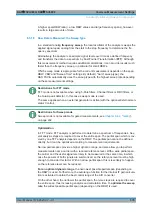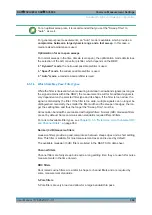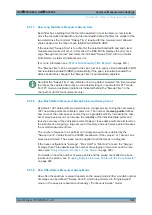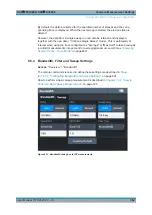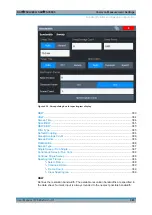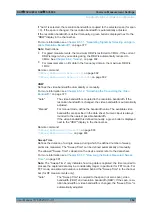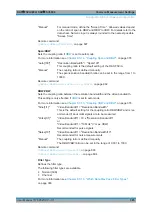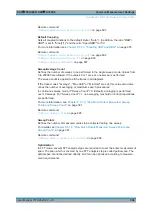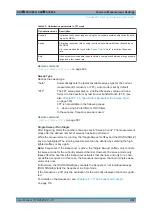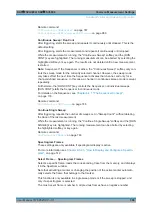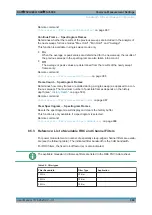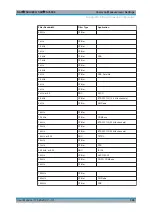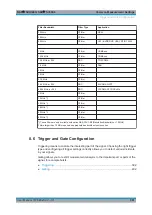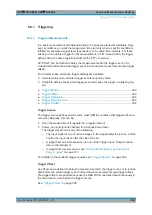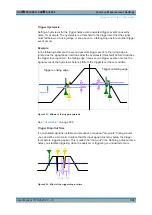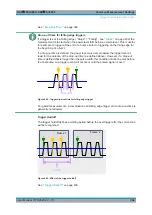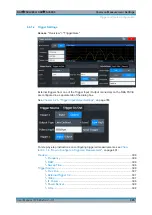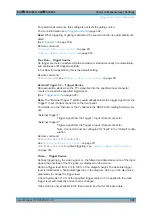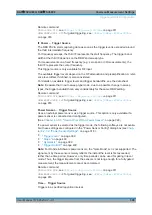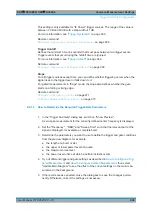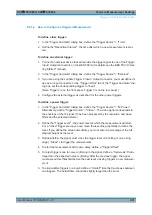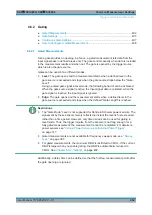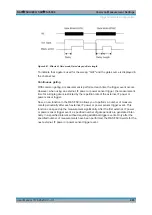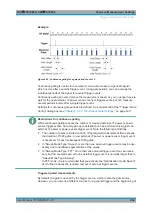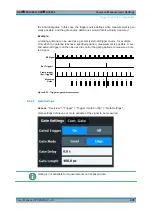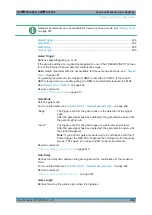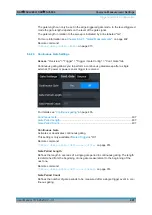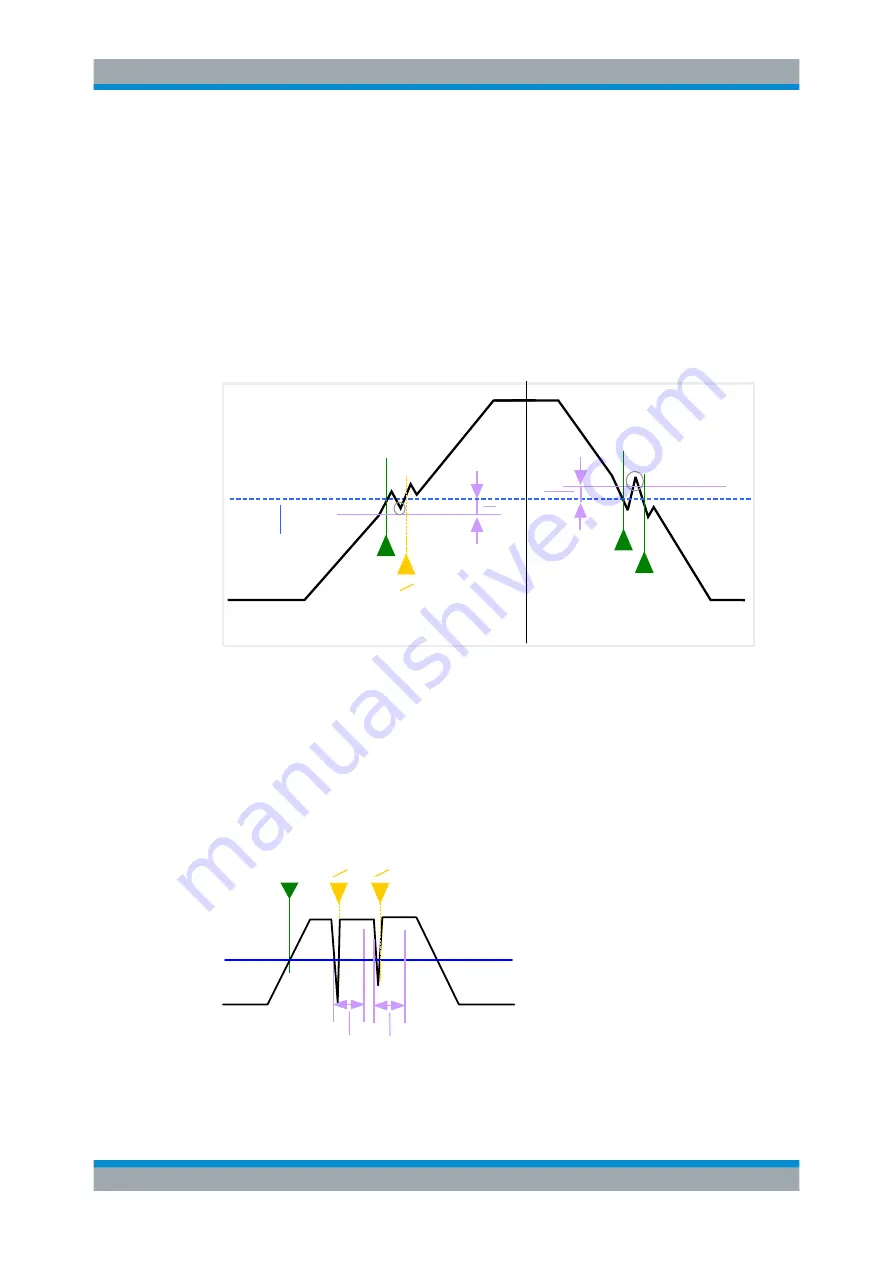
Common Measurement Settings
R&S
®
FSVA3000/ R&S
®
FSV3000
393
User Manual 1178.8520.02 ─ 01
Trigger Hysteresis
Setting a hysteresis for the trigger helps avoid unwanted trigger events caused by
noise, for example. The hysteresis is a threshold to the trigger level that the signal
must fall below on a rising slope or rise above on a falling slope before another trigger
event occurs.
Example:
In the following example, the second possible trigger event on the rising edge is
ignored as the signal does not drop below the hysteresis (threshold) before it reaches
the trigger level again. On the falling edge, however, two trigger events occur as the
signal exceeds the hysteresis before it falls to the trigger level the second time.
Trigger level
T
T
T
Trigger
hysteresis
T
Trigger on rising edge
Trigger on falling edge
Figure 8-17: Effects of the trigger hysteresis
See
Trigger Drop-Out Time
If a modulated signal is instable and produces occasional "drop-outs" during a burst,
you can define a minimum duration that the input signal must stay below the trigger
level before triggering again. This is called the "drop-out" time. Defining a dropout time
helps you stabilize triggering when the analyzer is triggering on undesired events.
T
Drop-Out
T
T
Figure 8-18: Effect of the trigger drop-out time
Trigger and Gate Configuration

